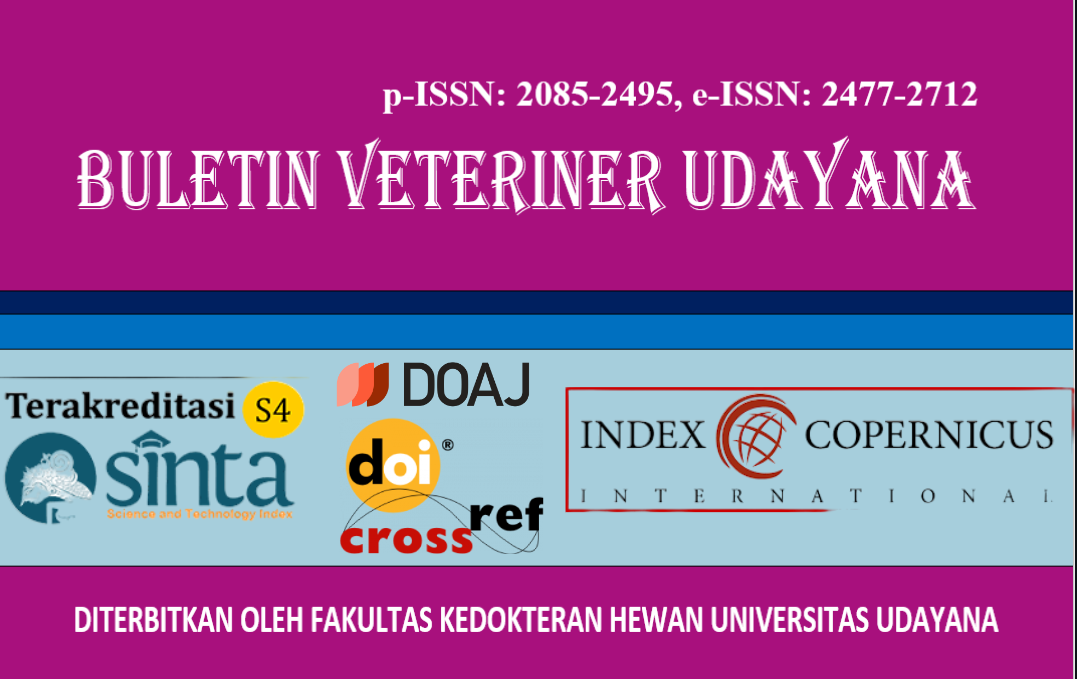MANAGEMENT OF CHRONIC MASTITIS DUE TO FUNGAL INFECTION IN MINIATURE PINSCHER DOGS WITH MASTECTOMY METHOD
DOI:
https://doi.org/10.24843/bulvet.2024.v16.i06.p08Keywords:
dog, abnormal mass, chronic mastitis, mastectomyAbstract
Mammary tumors in dogs are often mistaken for mastitis due to their very similar clinical symptoms. The purpose of this article is to provide information on the surgical management of chronic mastitis cases caused by fungal infections through the method of mastectomy. A Miki dog developed a lump in the fourth left mammary gland. Physical examination showed that the mass had a solid consistency. Hematology tests revealed lymphocytosis, microcytic anemia, and thrombocytopenia. Radiographic examination showed a radiopaque mass in the mammary gland area. Based on the physical examination, clinical signs, hematology, and supported by radiographic findings, the dog was temporarily diagnosed with a mammary tumor, and mastectomy surgery was performed. Postoperative tumor tissue was sent for histopathological examination at the Denpasar Veterinary Center, and the result showed no metastatic tumor cells, but fungal hyphae, macrophages, and lymphocytes were found. The dog was finally diagnosed with chronic mastitis due to a fungal infection. After surgery, the dog was treated with cefotaxime sodium injection (20 mg/kg body weight twice a day) and meloxicam injection (0.2 mg/kg body weight once a day). On the 4th day post-surgery, the treatment continued with cefixime trihydrate (10 mg/kg body weight twice a day for 7 days orally). Additionally, FuFang Ejiao Jiang was given to increase platelet production, 1 ml mixed with food. The wound was cleaned with chlorhexidine, Kenalog ointment was applied, and Enbatic powder was also used. The dog was declared healed on the 9th postoperative day with a dried wound, healed skin, good appetite and drinking, and normal urination and defecation. Biopsy of abnormal tissue is highly recommended to identify the type of tumor for considering therapy plans. However, mastectomy surgery is also necessary in this case because the dog had chronic mastitis, which could contribute to further complications.




